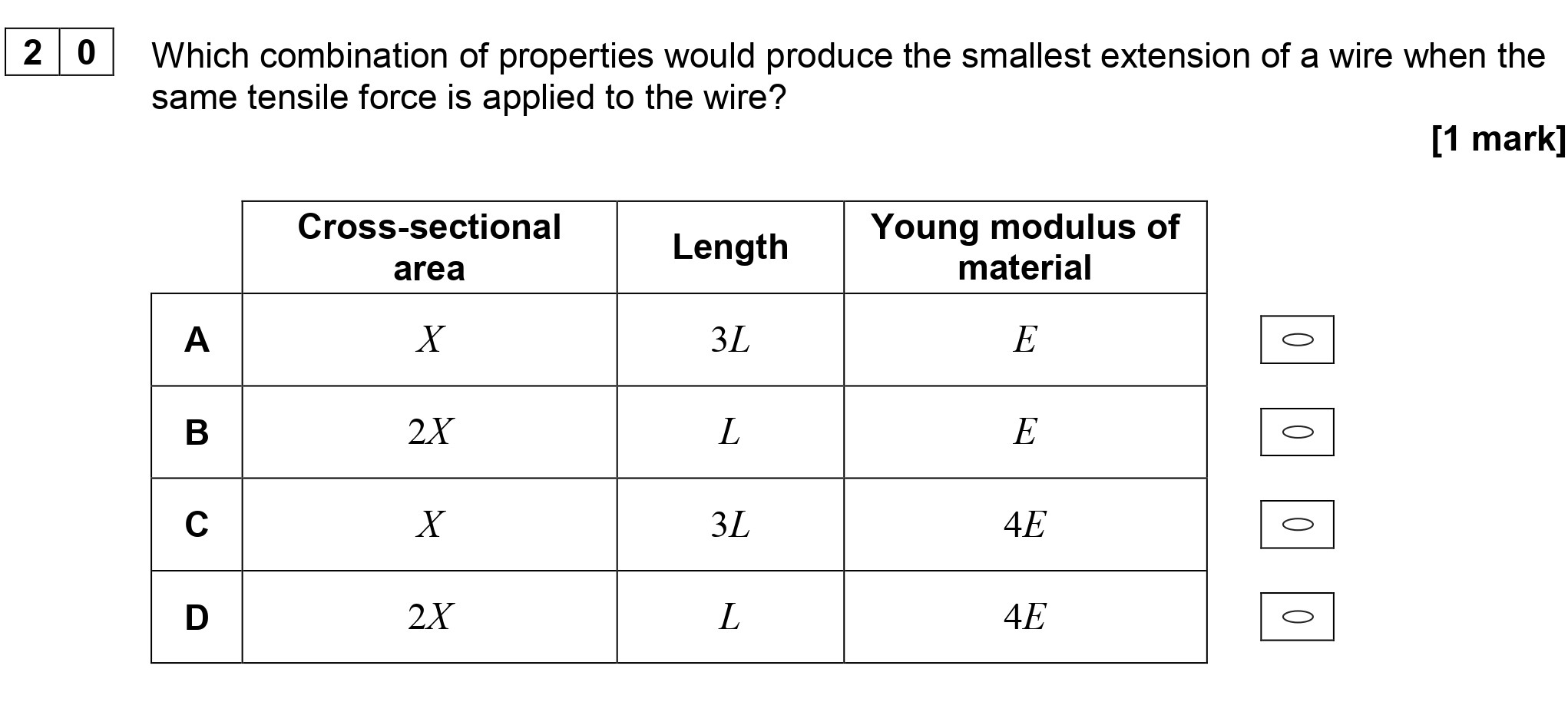Photo AI
Which combination of properties would produce the smallest extension of a wire when the same tensile force is applied to the wire? | Cross-sectional area | Length | Young modulus of material | |---------------------|--------|--------------------------| | A | X | 3L | E | | B | 2X | L | E | | C | X | 3L | 4E | | D | 2X | L | 4E | - AQA - A-Level Physics - Question 20 - 2019 - Paper 1
Question 20

Which combination of properties would produce the smallest extension of a wire when the same tensile force is applied to the wire? | Cross-sectional area | Length |... show full transcript
Worked Solution & Example Answer:Which combination of properties would produce the smallest extension of a wire when the same tensile force is applied to the wire? | Cross-sectional area | Length | Young modulus of material | |---------------------|--------|--------------------------| | A | X | 3L | E | | B | 2X | L | E | | C | X | 3L | 4E | | D | 2X | L | 4E | - AQA - A-Level Physics - Question 20 - 2019 - Paper 1
Step 1
Cross-sectional area: 2X, Length: L, Young modulus of material: 4E
Answer
To determine which combination produces the smallest extension, we can use the formula for extension:
where:
- is the tensile force,
- is the length,
- is the cross-sectional area,
- is the Young's modulus of the material.
From the options:
- In option D: The cross-sectional area is doubled (), the length is , and the Young modulus is quadrupled (). This maximizes the resistance to extension. The resulting extension willbe as follows:
- In contrast, the other options will yield greater extensions due to lower areas or lower Young's moduli. Thus, option D gives the smallest extension under the same tensile force.
